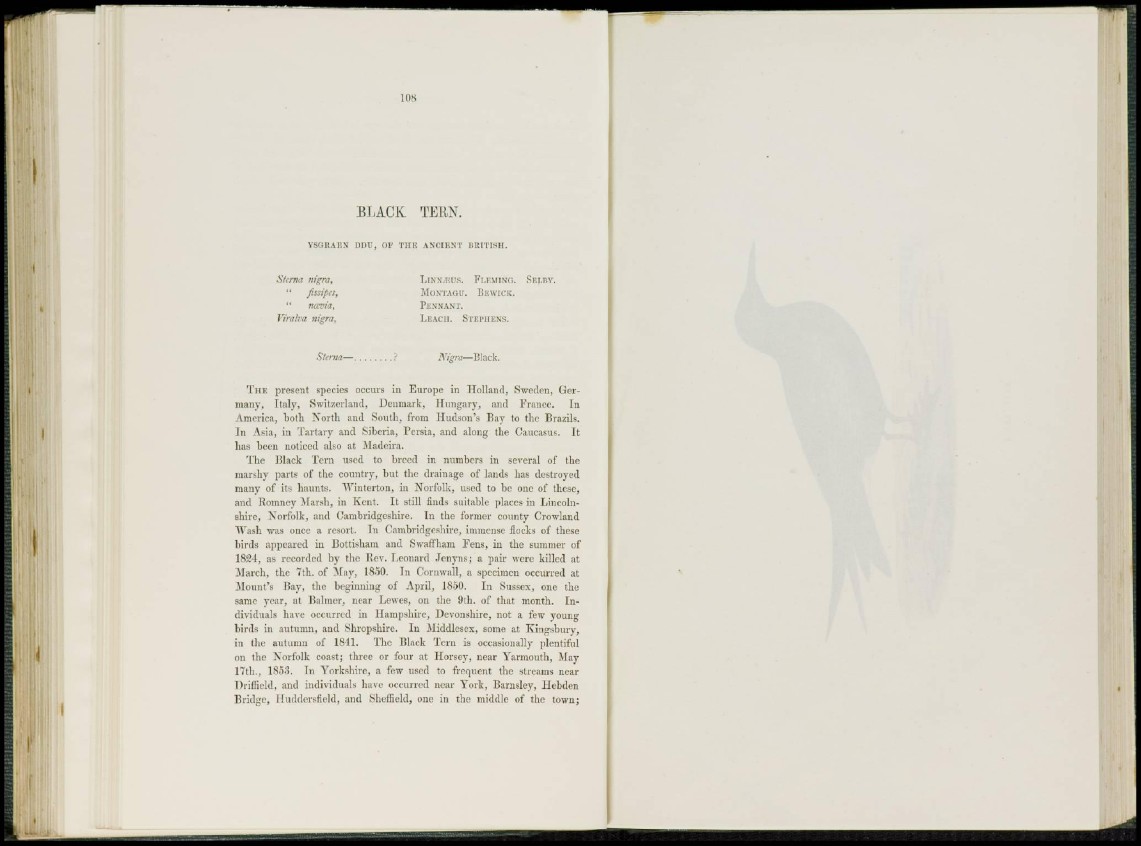
BLACK TEEN.
YSGRAEN DDU, OF THE ANCIENT BRITISH.
Sterna nigra,
" fissipes,
" naivia,
Viralva nigra,
LINNVEUS. FLEMING. SELBY.
MONTAGU. BEWICK.
PENNANT.
LEACH. STEPHENS.
Sterna— Nigra—Black.
T H E present species occurs in Europe in Holland, Sweden, Germany,
Italy, Switzerland, Denmark, Hungary, and France. In
America, both North and South, from Hudson's Bay to the Brazils.
I n Asia, in Tartary and Siberia, Persia, and along the Caucasus. It
has been noticed also at Madeira.
The Black Tern used to breed in numbers in several of the
marshy parts of the country, but the drainage of lands has destroyed
many of its haunts. Winterton, in Norfolk, used to be one of these,
and Romney Marsh, in Kent. It still finds suitable places in Lincolnshire,
Norfolk, and Cambridgeshire. In the former county Crowland
"Wash was once a resort. In Cambridgeshire, immense flocks of these
birds appeared in Bottisham and Swaffham Fens, in the summer of
1824, as recorded by the Rev. Leonard Jenyns; a pair were killed at
March, the 7th. of May, 1850. In Cornwall, a specimen occurred at
Mount's Bay, the beginning of April, 1850. In Sussex, one the
same year, at Balmer, near Lewes, on the 9th. of that month. Individuals
have occurred in Hampshire, Devonshire, not a few young
birds in autumn, and Shropshire. In Middlesex, some at Kingsbury,
in the autumn of 1841. The Black Tern is occasionally plentiful
on the Norfolk coast; three or four at Horsey, near Yarmouth, May
17th., 1853. In Yorkshire, a few used to frequent the streams near
Driffield, and individuals have occurred near York, Barnsley, Hcbden
Bridge, Iluddersfield, and Sheffield, one in the middle of the town;